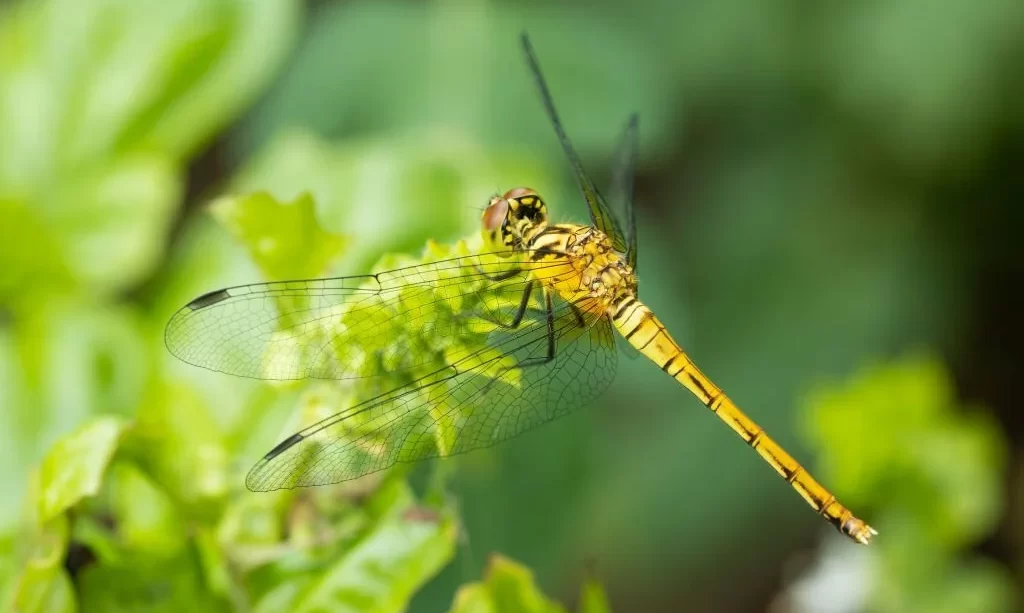Dragonflies are remarkable creatures that have captivated our imagination for centuries. These agile insects, with their shimmering wings and darting flight patterns, play a crucial role in maintaining the balance of our ecosystems. However, there are times when their presence may become a bit overwhelming, such as when you’re trying to enjoy a peaceful day by the pool or have a meal on your patio. In this article, we’ll explore the world of dragonflies and their importance in our environment. We’ll also discuss situations where understanding how to manage their presence can enhance our outdoor experiences while respecting their contribution to our ecosystem.
Dragonflies
Dragonflies, scientifically known as Odonata, are ancient insects that have been around for over 300 million years. These remarkable creatures are renowned for their distinctive characteristics:
- Physical Appearance: Dragonflies are easily recognizable by their elongated bodies, large compound eyes, and two pairs of intricately veined, transparent wings. Their vibrant colors and patterns vary among species, adding to their allure.
- Predatory Behavior: Dragonflies are voracious hunters, primarily preying on other insects. They are masters of the aerial hunt, using their exceptional speed and agility to catch their quarry mid-flight. This makes them valuable allies in controlling insect populations.
- Aquatic Life Stages: Dragonflies have a unique life cycle that begins in water. They lay their eggs in aquatic habitats, and their nymphs, known as “naiads,” live underwater, where they also feed on small aquatic creatures. Once mature, they emerge from the water as adults.
Dragonflies are essential components of our ecosystems, contributing to the balance of insect populations and indicating the health of our environment. While their presence in natural settings is generally welcomed, there are situations where managing their numbers becomes necessary for human comfort and safety. Understanding dragonflies’ role in nature is crucial to striking this balance.
Assessing the Need for Management
Before embarking on any management efforts, it’s essential to assess whether dragonfly management is truly necessary in your specific situation. Here are some factors to consider:
- Location: Are you in an area where dragonflies are causing a disturbance, like a swimming pool, outdoor dining area, or patio? Understanding the context of their presence is key.
- Frequency and Intensity: How often and how many dragonflies are causing issues? Occasional visits from these insects may not warrant management, while a persistent and intense presence might.
- Safety and Comfort: Consider the impact on human safety and comfort. If dragonflies pose a threat (e.g., biting species) or disrupt your outdoor activities, management may be necessary.
Non-Lethal Methods for Dragonfly Management
If it’s determined that dragonfly management is required, there are non-lethal methods to encourage them to move away from specific areas:
- Shading and Reducing Standing Water: Dragonflies are attracted to water, and providing shaded areas can reduce their presence. Covering or reducing standing water sources like swimming pools when not in use can be effective.
- Outdoor Fans: Dragonflies are skilled fliers, but they may avoid areas with strong air currents. Using outdoor fans can disrupt their flight patterns and make your outdoor space less attractive to them.
- Physical Barriers: Install screens or nets around your outdoor area to create a barrier that prevents dragonflies from entering. This approach is effective, especially in more confined spaces.
- Adjusting Outdoor Lighting: Dragonflies are drawn to light, especially during the evening. Using lights with less attraction to insects or adjusting their positioning can help reduce their presence around outdoor lighting.
These non-lethal methods aim to make specific areas less appealing to dragonflies, encouraging them to move to other locations in your garden or nearby natural habitats. It’s important to keep in mind that these measures do not harm the dragonflies; instead, they offer a balanced way to manage their presence while maintaining a comfortable outdoor environment.
Natural Predators and Alternatives
In managing dragonflies, it’s crucial to recognize that they have their own set of natural predators. These include birds, particularly swallows and swifts, and aquatic creatures like frogs. Encouraging natural predators in your area can help maintain a balance between dragonflies and their predators, reducing the need for direct management efforts.
Alternatively, you can explore other methods of managing insect populations without directly impacting dragonflies. Using mosquito nets, citronella candles, or insect repellents can help create a more comfortable outdoor experience while preserving the natural role of dragonflies.
Respecting Local Regulations
It’s important to be aware of and respect local regulations and conservation efforts when it comes to dragonflies. In some regions, certain dragonfly species may be protected due to their ecological significance. Such regulations are in place to maintain biodiversity and ensure the health of our ecosystems. Before implementing any management strategies, research and adhere to any local guidelines or regulations.
Conclusion
Dragonflies are not only captivating insects but also vital contributors to our environment. While they play a crucial role in controlling insect populations and maintaining ecosystem health, there may be occasions when managing their presence is necessary for human comfort and safety. Understanding the need for dragonfly management and implementing non-lethal methods, such as shading, fans, and barrier installation, can help strike a balance between our outdoor activities and respecting the natural world.
In cases where dragonflies are problematic, consider encouraging their natural predators or exploring alternatives to manage insects without directly affecting dragonflies. Ultimately, a thoughtful and balanced approach allows us to coexist with these remarkable insects and preserve their role in our ecosystems, ensuring a harmonious blend of the natural and human worlds in outdoor spaces.



